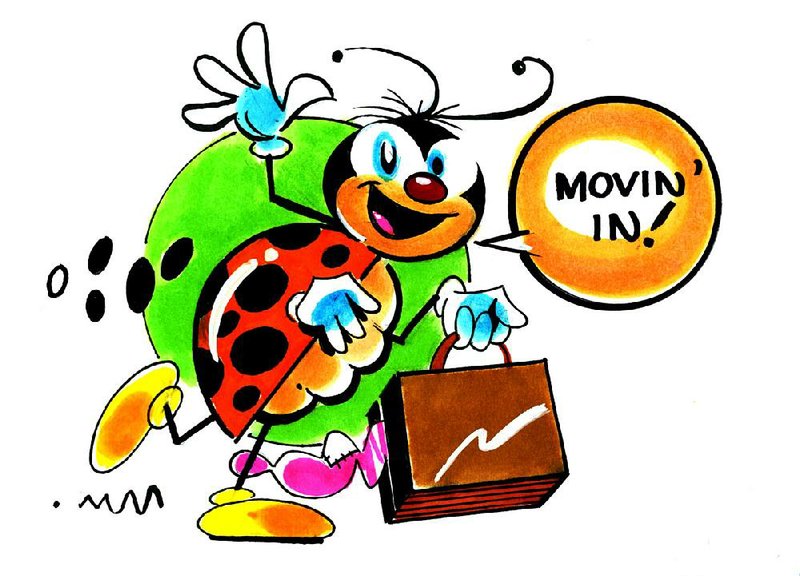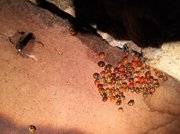Q While my wife and I were working in the attic of our house, we came across what looks like ladybugs. We were told they could be something else. What is your opinion?
A I think they are definitely ladybug beetles, and probably the Asian lady beetle. From the 1960s to the '90s, large numbers of Asian lady beetles were released in several Southern states to control agricultural pests. During the spring and summer, the larvae and adult insects feed mainly on aphids, consuming hundreds each day. As cool weather approaches, the adults begin to look for a protected place to overwinter. They migrate into homes and attics and even mailboxes. In a remote attic or outbuilding they do not pose much of a problem, but if they try to move indoors with you, they can be a pest. As a defense against predators, the beetles secrete a foul-smelling, yellowish fluid. It can stain curtains or fabrics. Some people also complain about a slight biting sensation. The adult Asian lady beetle is oval and about a quarter-inch long. Some have spots, and some don't. The color ranges from shades of red to tan or orange. Most beetles also have a small, dark "M" marking in the white spot behind the head. If they aren't bothering you, I would ignore them.
Q I have some tulip bulbs to plant, and I read an article that said to put petroleum jelly on the bulbs so the squirrels would not bother them. Do you recommend doing this?
A That is a new one for me. When it comes to animal control, I do recommend that you try a variety of home remedies, since none of them are foolproof. That being said, I can't imagine how petroleum jelly would work. I did a Google search to see what others were saying about this and found a number of hits. Some recommend putting petroleum jelly on the bulbs themselves, but most said to put it on the foliage. I think that would make a mess, since anything that blows through the air would stick to the leaves if they were coated with petroleum jelly. If you want to keep squirrels from digging up and eating the bulbs, you can plant them in wire cages, with a big enough gauge that the foliage can grow up through it. Or plant daffodils, which are poisonous -- the squirrels leave them alone. In my reading, I did find a use for petroleum jelly I didn't know about. If you have a cloth napkin that gets a lipstick stain, treat it with petroleum jelly before running it through the washer, and the stain comes out. I will try that, but I won't use petroleum jelly on my tulips -- bulbs or foliage.
Q I think this has been the most beautiful late fall for the trees. The Bradford pear, sweet gums and crape myrtles have been great this year. Why do you think this was a better year than we saw the past few?
A Much of the state saw trees shed their leaves early, but I agree that for the trees that did not, it has been a spectacular fall. In addition to the trees you mentioned, the Japanese maples, ginkgo and red maples were stunning, and some still are. We have had ideal conditions for leaf color with cool nights and warm days. The rains in October saved us after the dry September. We also have had several light frosts, but most of central and southern Arkansas has still not seen a hard, killing frost, so the leaves are still on the trees. If you think back to the past two falls, we had extremely early hard freezes, which occurred before fall color had fully set in, and before the abscission layers formed on the leaves. Many crape myrtles and Japanese maples retained foliage all winter and had winter damage because of that early frost. Our late season has allowed us to enjoy the fall colors much longer this year, and hopefully has the trees better prepared for the winter ahead.
Janet B. Carson is a horticulture specialist for the University of Arkansas Cooperative Extension Service. Write to her at 2301 S. University Ave., Little Rock, Ark. 72204 or email her at
jcarson@arkansasonline.com
HomeStyle on 12/19/2015

